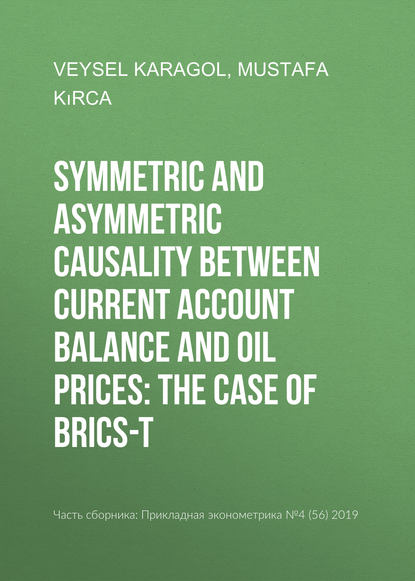Symmetric and asymmetric causality between current account balance and oil prices: The case of BRICS-T
О книге
The main aim of the study is to examine the symmetric and asymmetric relationship between oil prices and the current account balances of BRICS-T countries covering the period from 2003:Q1 to 2017:Q2. In the study, Hacker and Hatemi-J (2006) for the symmetric causality test and Hatemi-J (2012) for the asymmetric causality test are used to test the relationships between the variables. The symmetrical causality test results support that there is unidirectional causality from Brazil’s current account balances to oil prices and there is unidirectional causality from oil prices to Turkey’s current account balances. On the other hand, asymmetrical causality test results support that there are many causal relationships between the variables shock. There is causality from positive oil price shock to South Africa’s positive current account balances shock, from negative oil price shock to Russia, China, and Turkey’s negative current account balances shocks and to Russia, India, and Turkey’s positive current account balances shocks. Besides, there is causality from Brazil’s negative current account balances shock to both positive and negative oil prices shocks. Also, it is seen that there is causality from India’s positive current account balances shock to negative oil prices shock. Policy-makers should consider the impact of the shocks in oil prices on the current account to evaluate any policy, especially for Russia, China, India and Turkey.
Отзывы
0Чтобы оставить отзыв или проголосовать, необходимо авторизоваться







